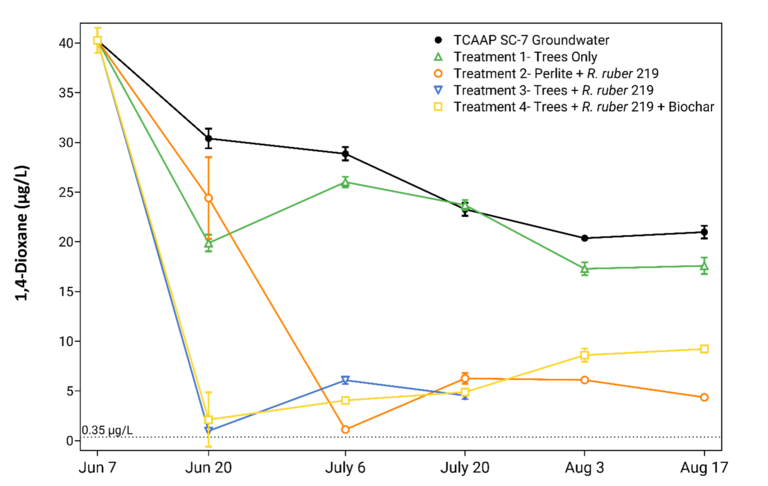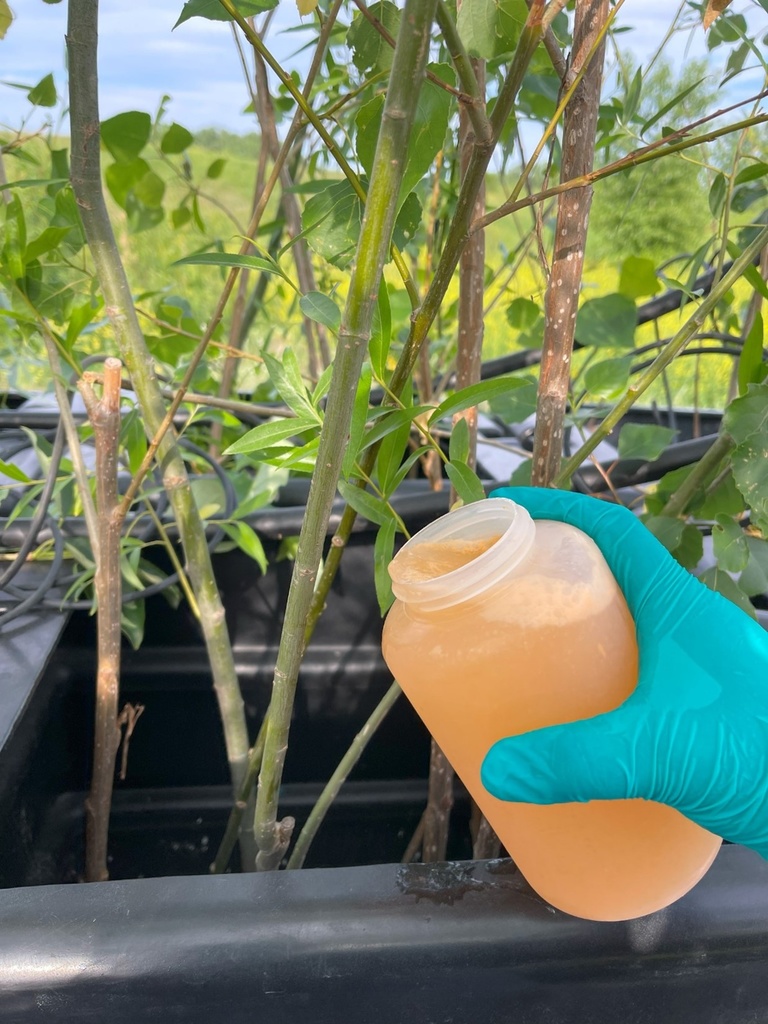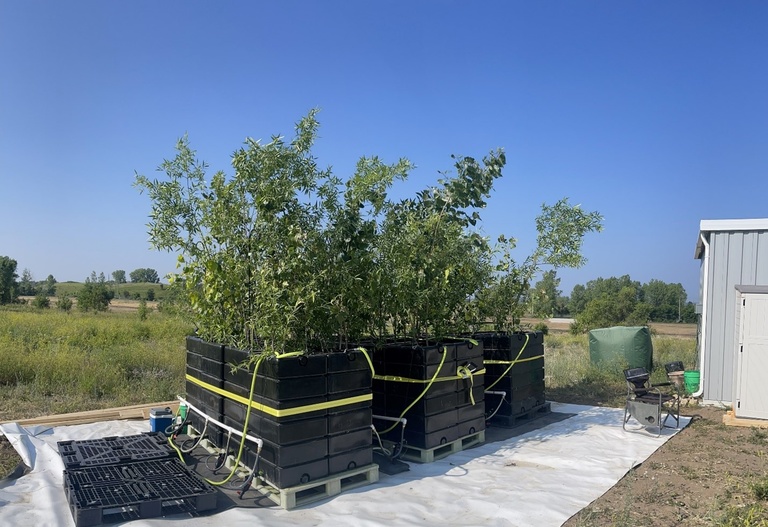
This month's ESAC sustainability spotlight is on Reid Simmer, PhD. He is an assistant research scientist in the Schnoor Lab at IIHR—Hydroscience and Engineering and a post-doctoral research scholar in the Department of Civil and Environmental Engineering.
Education:
PhD, The University of Iowa, 2021
MS, The University of Iowa, 2018
Research areas:
Groundwater remediation, bioremediation, phytoremediation
How have your individual efforts or your lab group’s research addressed sustainability?
Under Jerry Schnoor’s guidance, our research focuses on remediating cancer-causing pollutants using nature-based techniques. Specifically, we specialize in treating contaminants with plants (phytoremediation) and microbes (bioremediation). Since 2016, my research has focused on treating 1,4-dioxane, a probable human carcinogen, with poplar and willow trees, as well as bacteria that break down dioxane into harmless products.
Describe a recent completed or ongoing project involving sustainability. Is there a specific event, workshop, or collaboration you have participated in?
We currently have a field demonstration project with the US Army at the former Twin Cities Army Ammunition Plant in Arden Hills, MN. This site has a large 1,4-dioxane plume that has migrated off-site, contaminating the drinking water of nearby communities.
In the first year, we planted poplar and willow in above-ground 75-gallon bioreactors (Phyto-Attached Growth Reactors, or PhAGRs, developed by CEE alum Louis Licht [PhD CEE 1990] and his company, Ecolotree) to treat the contaminated groundwater. We also significantly improved the treatment of 1,4-dioxane by adding Rhodococcus ruber 219, a dioxane-degrading bacteria, to the root zone of these trees.
In the remaining two years of the project, we aim to demonstrate that bioremediation plus phytoremediation is an effective and sustainable alternative treatment solution for 1,4-dioxane-contaminated groundwater.
Is there a publication related to this work that you would like to provide a citation for?
- Simmer, R. A., & Schnoor, J. L. (2022). Phytoremediation, bioaugmentation, and the plant microbiome. Environmental science & technology, 56(23), 16602-16610.
- Simmer, Reid A., Patrick M. Richards, Jessica M. Ewald, Cory Schwarz, Marcio LB da Silva, Jacques Mathieu, Pedro JJ Alvarez, and Jerald L. Schnoor. "Rapid metabolism of 1, 4-dioxane to below health advisory levels by thiamine-amended Rhodococcus ruber strain 219." Environmental science & technology letters 8, no. 11 (2021): 975-980.
- Simmer, R., Mathieu, J., da Silva, M. L., Lashmit, P., Gopishetty, S., Alvarez, P. J., & Schnoor, J. L. (2020). Bioaugmenting the poplar rhizosphere to enhance treatment of 1, 4-dioxane. Science of the Total Environment, 744, 140823.
Is there anything else you would like to share about your work towards sustainability?
Nature-based solutions, such as bioremediation and phytoremediation, have tremendous potential to treat a wide range of environmental problems. These green treatment technologies are not only well suited for polluted groundwater and waterways but can also help curb climate change by sequestering carbon dioxane.



